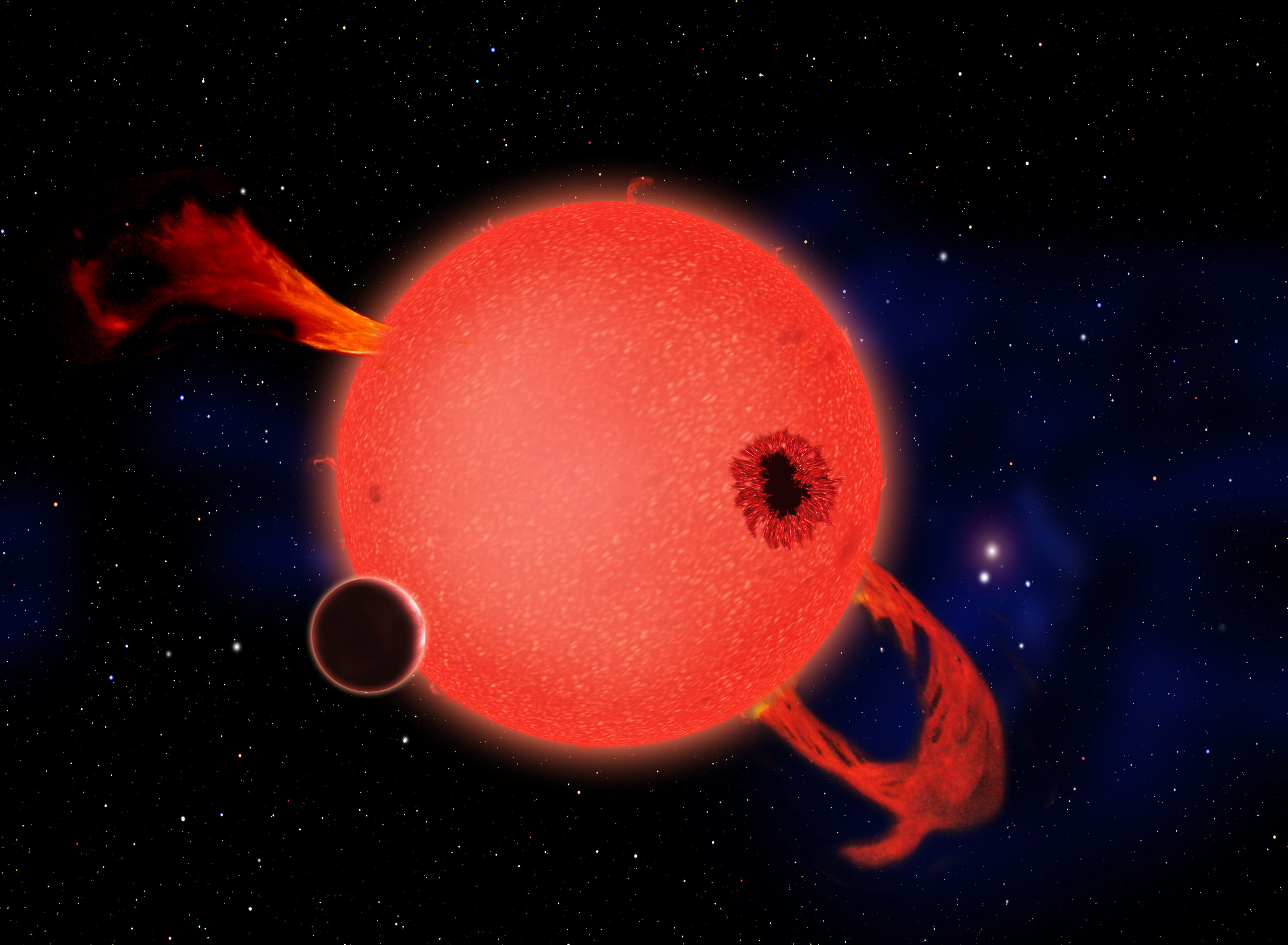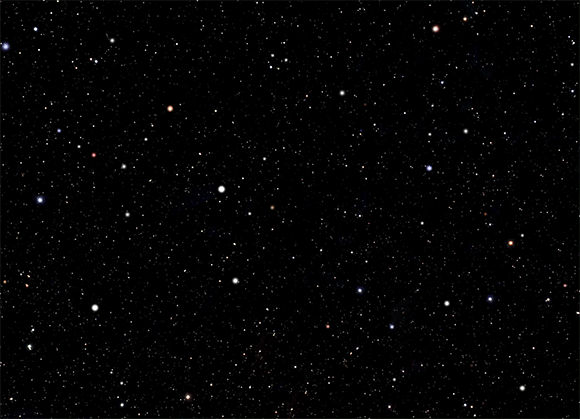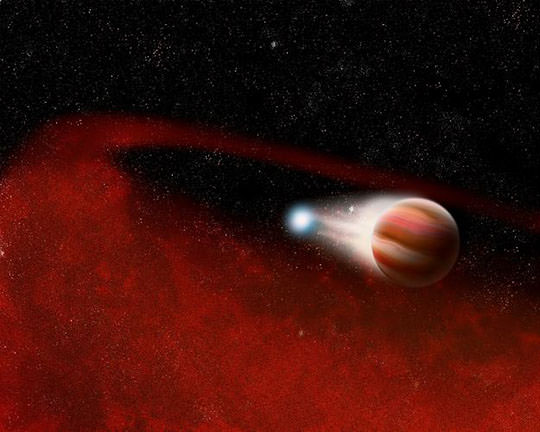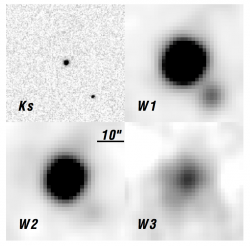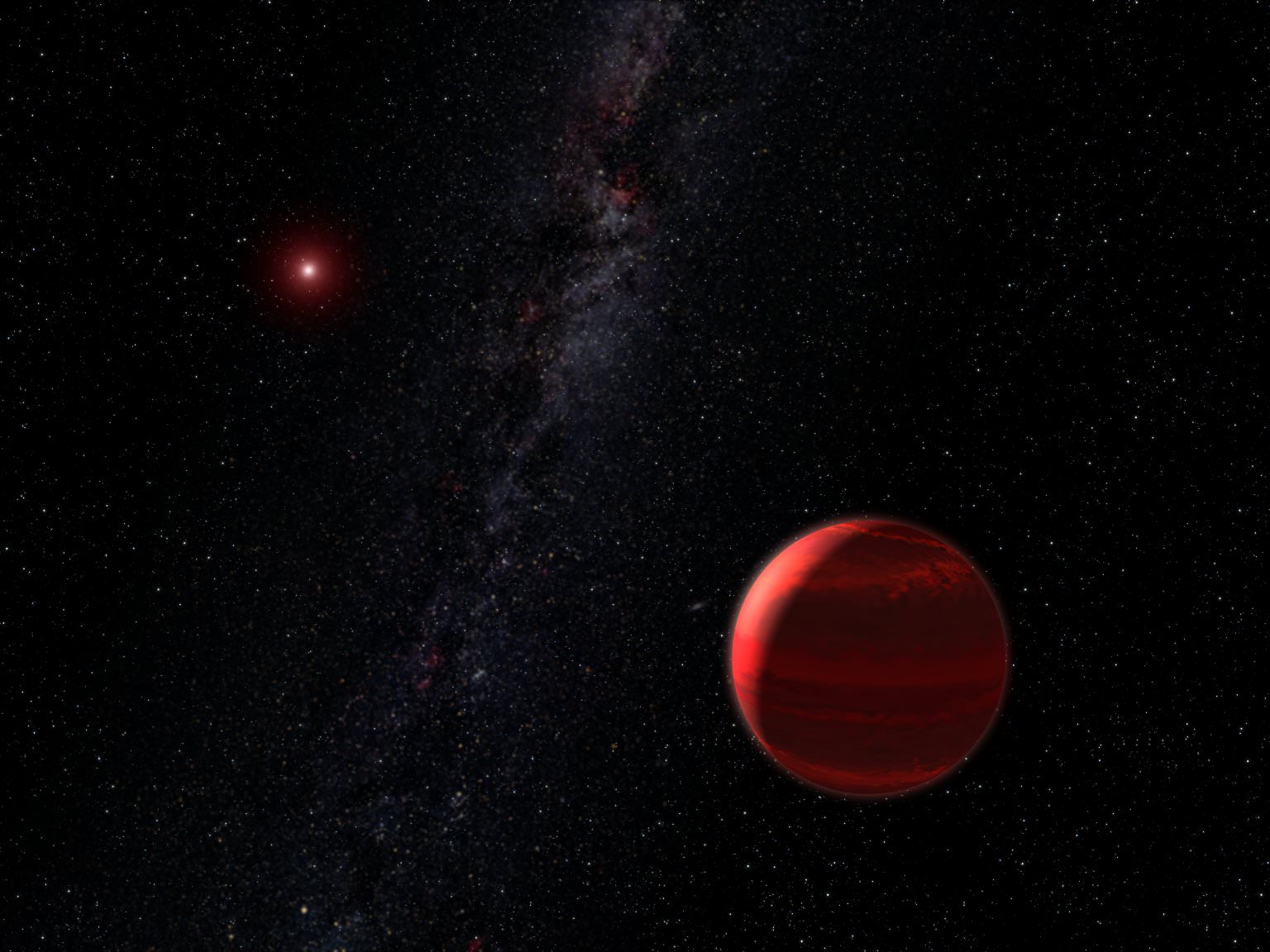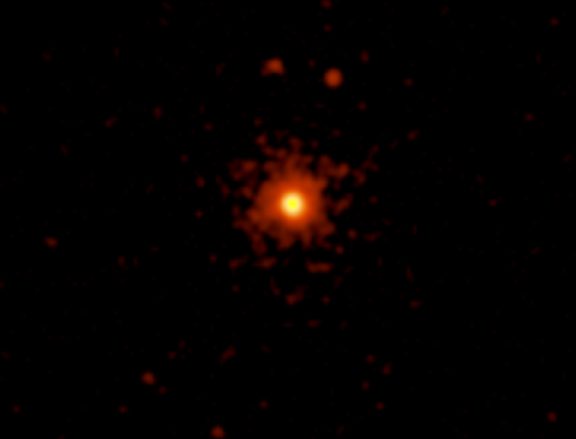Artist’s impression of a rocky planet orbiting a red dwarf. Credit: David A. Aguilar (CfA)
We may literally be surrounded by potentially habitable exoplanets, according to new research by a team from the Harvard-Smithsonian Center for Astrophysics.
Using data gathered by NASA’s exoplanet-hunting Kepler spacecraft, the CfA researchers discovered that many red dwarf stars harbor planets, and some of those planets are rocky, Earth-sized worlds. Considering that red dwarfs, albeit optically dim, are the most abundant type of stars in our galaxy, this means that even a small percentage of them being host to Earthlike exoplanets puts the total number of potentially habitable worlds very high — and some of them could be right next door.
“We thought we would have to search vast distances to find an Earth-like planet,” said CfA astronomer and the paper’s lead author Courtney Dressing. “Now we realize another Earth is probably in our own backyard, waiting to be spotted.”
And our own backyard, in cosmic terms, could mean a mere 13 light-years away.
Our solar system is surrounded by red dwarfs. You can’t see them in the night sky because they are much too dim — less than a thousandth the brightness of the Sun. But they make up 75% of the stars in the local neighborhood, and based on the Kepler data the CfA team estimates that 6% of those red dwarfs likely have an Earth-sized planet in orbit around them.
And with at least 75 billion red dwarfs scattered across the galaxy… well, you do the math.*
“We now know the rate of occurrence of habitable planets around the most common stars in our galaxy,” said co-author David Charbonneau (CfA). “That rate implies that it will be significantly easier to search for life beyond the solar system than we previously thought.”
A visualization of the “unseen” red dwarfs in the night sky. Credit: D. Aguilar & C. Pulliam (CfA) See original here.
The conditions on a planet orbiting a red dwarf wouldn’t be exactly like Earth, of course. The planet would have to orbit rather closely to its star to be within its habitable zone, and would have to have a reasonably thick atmosphere to regulate heat and protect it from stellar outbursts. But one benefit to orbiting a red dwarf is that they have very long life spans — potentially longer than the current age of the Universe! So a habitable world around a red dwarf would literally have billions of years for life to evolve, thrive and develop on it.
“We might find an Earth that’s 10 billion years old,” Charbonneau said.
The team’s findings were presented today, Feb. 6, by Dressing during a press conference at the Harvard-Smithsonian Center for Astrophysics in Cambridge, MA. The results will be published in The Astrophysical Journal. (Added 2/7/13: here’s the video of the press conference.)
CfA astronomers identified 95 planetary candidates circling red dwarf stars. Of those, three orbit within the habitable zone (marked in green) – the distance at which they should be warm enough to host liquid water on the surface. Those three planetary candidates (marked with blue dots) are 0.9, 1.4, and 1.7 times the size of Earth. Credit: C. Dressing (CfA)
Read more on the CfA news release here.
*Ok, I did the math. That’s 4,500,000,000 Earth-like exoplanets around red dwarfs alone!

